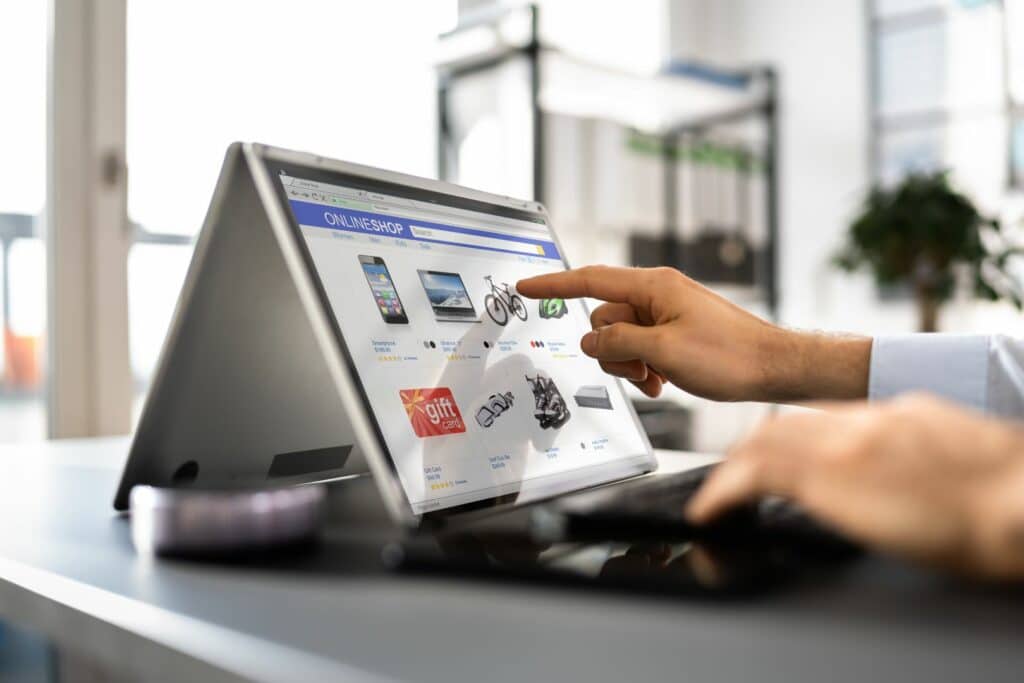Home-based working and isolation regimes during the pandemic have increased the profile home and garden ecommerce. Harnessing the huge opportunities for growth in the sector means you must be ready to meet and exceed your customers’ expectations with leading ecommerce features and functionality.
Home and garden ecommerce challenges and how to meet them
Competition is high and the range of products is huge. Many people have started buying these products for the first time very recently, so they need a lot of useful and informative content to help them make their buying choices.
Converting first-time buyers – despite the financial pressures many millennials have recently climbed onto the property ladder for the first time. They want to make the right choices for themselves and their lifestyles and are likely to research and review their options extensively, extending the time it takes to convert them into customers.
Think with Google indicates that over half of customers said that online video helped them choose which brand or product to buy. Augmented reality could be a good option to engage your customers’ senses and help them to visualize your products in their own home or garden. Product reviews and ratings will also give customers confidence along with well-researched frequently asked questions. Your content strategy will be an important contributor to your success.
Promotions with discounts for future purchases can help to speed up the buying process. Once customers have made their first purchase you can start the process of building brand loyalty with personalized offers based on their browsing and buying history on your site.
Re-engagement – in a highly competitive environment customers are becoming less loyal to specific brands, especially if they are undecided or unengaged. Promotions can be helpful to encourage customers to buy before leaving your site. Loyalty programs can also help to re-engage with previous customers who haven’t made a purchase for some time. Collecting contact details to receive discounts or other benefits will allow you to re-target your customers with email campaigns and to extend their experience beyond your website.
Understanding and building on preferences – in home and garden ecommerce, visitors to your site probably have a clear idea of what they want. Using machine learning and artificial intelligence to make relevant suggestions and recommendations based on searches and trending products can streamline and improve their online experiences.
Segmentation and insights tools will help you to quickly identify and suggest relevant product types, price bands, and categories to speed-up and improve your online conversion across multiple channels. Integrated marketing tools can help you to test different strategies and discover what works best for your customers.
Mobile-friendly – as well as providing a mobile-friendly ecommerce website it’s worth considering a mobile app or progressive web app (PWA) for your store so that your brand is easily accessible from your customers’ preferred smartphones or mobile devices. They won’t have to wait for a browser to open to receive your latest sales messages and you can push promotional updates to customers who accept notifications rather than having to ask them to subscribe.
Social selling – style and design are important for your home and garden products. Last year, Google recorded a significant increase in people searching for terms like ‘ideas’ and ‘DIY’ in the home and garden category.
Many people will turn to their favorite social media channels for ideas and inspiration providing you with an ideal opportunity to position your brand. Make sure your ecommerce platform allows you to share ‘home tours’, videos and other high quality content on social channels, as well as managing responses and handling social sales easily.
Product discovery – with large catalogs and a wide variety of products, your home and garden ecommerce site could be daunting for customers. Home improvement, decor and garden products are often included in larger purchases so high quality support for product discovery can encourage up-sales and cross-sales.
Your content strategy will need to deliver a wide range of engaging information in multiple formats at every customer touchpoint. You can provide user-friendly navigation, well-structured page footers, and dynamic tools to create product bundles. You can help customers discover items that are typically purchased together along with an ‘add to basket’ button for easy purchasing. Analytics will allow you to track user journeys to further refine your site structure and product recommendations.
If your products are complex and varied, it may also be worth considering guided selling solutions to simplify the discovery process for a new customer. Creating visual and interactive finders that ask questions and refine the results based on answers is a popular solution in this area.
Your customers could be searching for products at any time and from anywhere so chatbots are a useful way to meet their needs to reduce drop-off rates. One survey found that eight out of 10 customers has a positive experience with chatbots to answer basic questions and provide useful information.
Seasonality and location – delivering the right content to the right customers through segmentation will need to take account of seasonal and geographic differences. For example, understanding localized temperature and rainfall can provide valuable insights into the length of the buying season for home heating and lighting or outdoor cooking products.
Shipping and tracking – when you work with multiple suppliers they are likely to have their own supply chains and distribution processes which will affect the way your customers can place and receive their orders. To manage customer expectations, effective order management processes can be used to highlight shipping conditions, restrictions, and costs as soon as possible in the buying journey along with options to buy online and pick up in store (BOPIS), for example.
Once their order has been placed, your customer will want to know when it will be delivered or available for collection so order tracking is essential.
Returns – while some products, especially for the garden, will be difficult to return you will improve conversion rates by making your returns policy clear, unambiguous, and as easy as possible. Make it visible and place it close to the ‘add to cart’ button for confidence-building transparency.
The Williams Commerce team has extensive experience of working with home and garden brands.
Speak with one of our experts to find out how to improve the performance of your home and garden ecommerce business in 2022.








